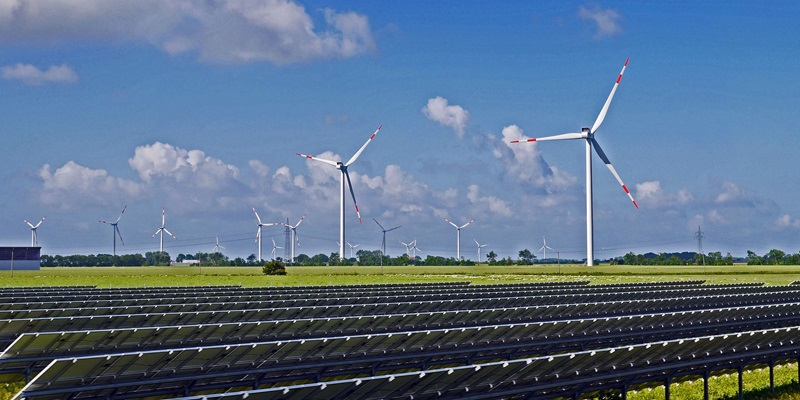The digital revolution has led to an exponential growth in data centers worldwide, resulting in an increasing demand for electricity. With data centers consuming 1-2% of the world’s electricity, it has become imperative for operators to seek sustainable solutions. This article explores the potential of grid edge solutions, such as microgrids and battery storage systems, and the shift towards renewable energy sources to address the challenges associated with the growth of data centers.
Grid Edge Solutions: Maximizing Renewable Generation and Reducing Fossil Fuel Use
As the energy demands of data centers continue to surge, grid edge solutions offer a promising pathway to efficiently integrate renewable energy sources. Microgrids and battery storage systems enable operators to optimize their use of renewable generation while actively reducing reliance on fossil-fuel-based energy sources. Direct current (DC) power transmission is an additional avenue that can enhance the overall energy efficiency of data centers.
Challenges Associated with the Growth of Data Centers
The exponential growth of data centers brings forth numerous challenges. One primary concern is the increased strain on the electricity grid, which could lead to supply inadequacies and grid instability. Additionally, data centers typically contribute to greenhouse gas emissions throughout their lifecycle, from the construction phase to daily operations. Overcoming these challenges necessitates the integration of sustainable energy practices.
Industry Shift Towards Renewable Energy as Primary Electricity Source
Leading industry players are recognizing the urgency to reduce carbon footprints and are increasingly turning to renewable energy as their primary electricity source. This shift is driven by environmental concerns, regulatory pressures, and the growing availability and affordability of renewable energy technologies. As the data center sector embraces renewable energy, it paves the way for a more sustainable future.
Greenhouse Gas Contributors in Data Centers: From Construction to Operations
The environmental impact of data centers extends beyond their energy consumption. The construction process, including the manufacture and transportation of materials, contributes to carbon emissions. Additionally, the cooling and power distribution systems within data centers also contribute significantly to greenhouse gas emissions. Tackling these contributors is crucial in achieving a greener future for data centers.
The Role of Microgrid Technologies in Empowering Data Center Operators
Microgrids offer data center operators greater control over their power supply and enable efficient management of energy resources. By deploying monitoring and energy storage capabilities, operators can enhance grid resilience, optimize energy distribution, and respond flexibly to changing electricity demands. Microgrids serve as a reliable and sustainable solution to ensure an uninterrupted power supply while promoting energy efficiency and the integration of renewable energy resources.
Utilizing Monitoring and Energy Storage Capabilities in Microgrids
For data center operators, maintaining power availability and reliability is crucial. Microgrid technologies allow operators to monitor energy consumption in real-time, identify areas of inefficiency, and make informed decisions to optimize energy usage. Energy storage systems within microgrids enable operators to store excess renewable energy for later use, reducing reliance on the grid during peak demand periods.
The Importance of Investing in Renewable Energy to Support Data Center Needs
Investing in renewable energy sources is a critical success factor for data centers seeking to achieve long-term sustainability. By ensuring a diversified renewable energy portfolio, data center operators can stabilize energy costs, reduce their environmental impact, and contribute to building a more resilient and sustainable grid infrastructure. Moreover, such investments help foster innovation and support the development of local renewable energy projects.
Hitachi Energy’s Sustainable Solutions for Data Centers
With a century of experience in partnering with grid operators, Hitachi Energy offers holistic and sustainable solutions throughout the lifecycle of data centers. Hitachi Energy works closely with data center operators to integrate renewable energy generation, implement energy storage systems, and optimize overall energy efficiency. By leveraging Hitachi Energy’s expertise, data center operators can transition towards a green and resilient energy future.
Envisioning a Future Where Data Center Operators Are Active Participants in the Grid
As the world moves towards a sustainable energy transition, data center operators have the opportunity to play a crucial role in the grid ecosystem. They can actively contribute as energy consumers, invest in local renewable generation, and even become microgrid operators. This transition positions data centers as major participants in a decentralized, renewable energy-powered grid, leading the way towards a greener and more sustainable future.
The rapid growth of data centers presents both challenges and opportunities for sustainable energy practices. By embracing grid edge solutions, such as microgrids and battery storage systems, and investing in renewable energy, data center operators can maximize the use of renewable generation while reducing their reliance on fossil fuels. A collaborative effort among industry players, policymakers, and technology providers is crucial to achieving a future where data centers actively contribute to a cleaner and more resilient grid infrastructure.

